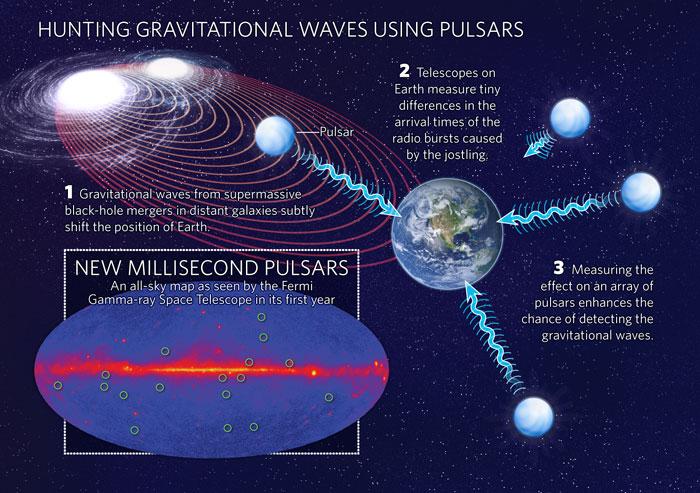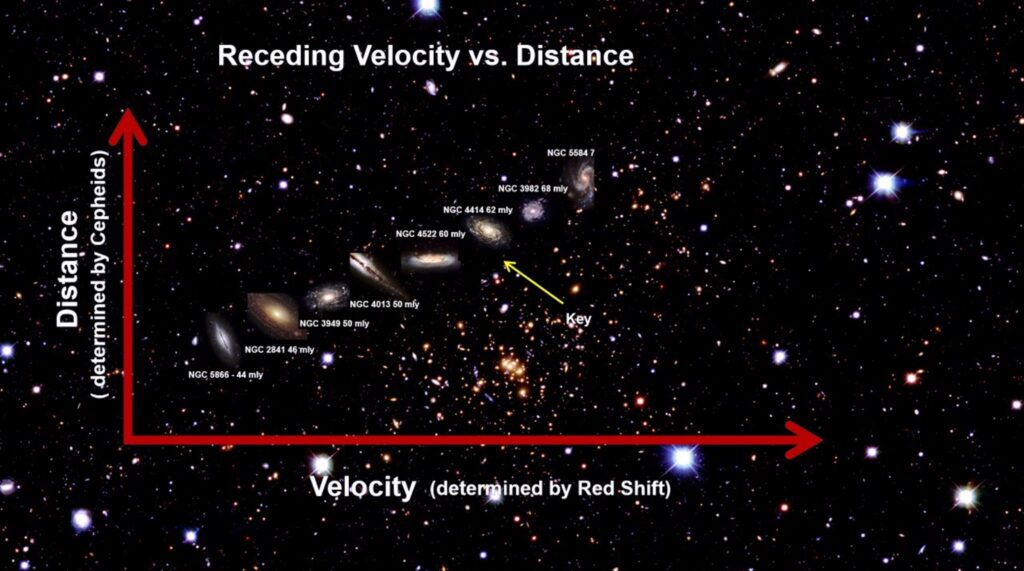In the vast cosmic ballet of the universe, supermassive black holes (SMBHs) play a leading role. These colossal entities, with masses ranging from a million to ten billion times that of our Sun, reside at the heart of most galaxies, including our own Milky Way. Their gravitational pull is so strong that not even light can escape, making them both fascinating and enigmatic.
A Cosmic Symphony of Gravitational Waves
As galaxies collide and merge in the grand cosmic arena, their central SMBHs come together, forming binary systems. These binary SMBHs whirl around each other, creating ripples in the fabric of space-time known as gravitational waves. While these waves travel across the cosmos, they carry with them the story of these titanic mergers.
Enter pulsar timing arrays (PTAs), our cosmic observatories, which listen to the universe’s heartbeat through the precise ticking of neutron stars, or pulsars. PTAs are on the verge of detecting the symphony of gravitational waves produced by binary SMBHs. This detection will not only confirm the existence of these binary systems but also open a new window into studying the universe.
A New Approach to Understanding the Universe’s Behemoths
In a groundbreaking study, researchers have taken a novel approach to predict the population and characteristics of binary SMBHs and the gravitational waves they generate. Rather than starting with the galaxy’s stellar mass, the study uses the galaxy’s velocity dispersion—a measure of how fast stars are moving within the galaxy—as a more direct way to estimate the mass of SMBHs. This method is based on a more “fundamental” relationship between the velocity of stars and the mass of the central black hole, offering a clearer picture of these cosmic giants.

The findings suggest that the universe may be teeming with more massive binary SMBHs at greater distances than previously thought. This has significant implications for detecting the gravitational wave background (GWB)—the collective hum of all gravitational waves from SMBH binaries across the cosmos—through PTAs. The study predicts that the GWB might be more intense than earlier models anticipated, hinting at a universe where galaxy mergers and SMBH pairings are more common.
Implications for Future Discoveries
This research not only enhances our understanding of SMBHs and the gravitational waves they produce but also has exciting implications for future astronomical discoveries. For instance, the predicted presence of more massive binary SMBHs at high redshifts (farther back in the universe’s history) could lead to the detection of individually resolvable sources. These are specific binary systems that PTAs can pinpoint, offering unprecedented opportunities to study these cosmic phenomena in detail.

Moreover, the study’s methodology, by focusing on the velocity dispersion of galaxies, offers a more reliable way to infer the mass of SMBHs. This could refine our estimates of how many binary SMBH systems exist and their impact on the gravitational wave background we expect to detect.
A New Chapter in Cosmic Exploration
The potential detection of gravitational waves from binary SMBHs by PTAs marks the beginning of a new chapter in our quest to understand the universe. It promises not just to confirm theories about the existence and nature of SMBHs but also to unveil the intricate dance of galaxy mergers that has been playing out over cosmic history.
As we stand on the brink of these discoveries, we are reminded of the universe’s vastness and the mysteries it holds. The study’s approach offers a more accurate map to navigate this uncharted territory, bringing us one step closer to unraveling the cosmic dance of supermassive black holes.









